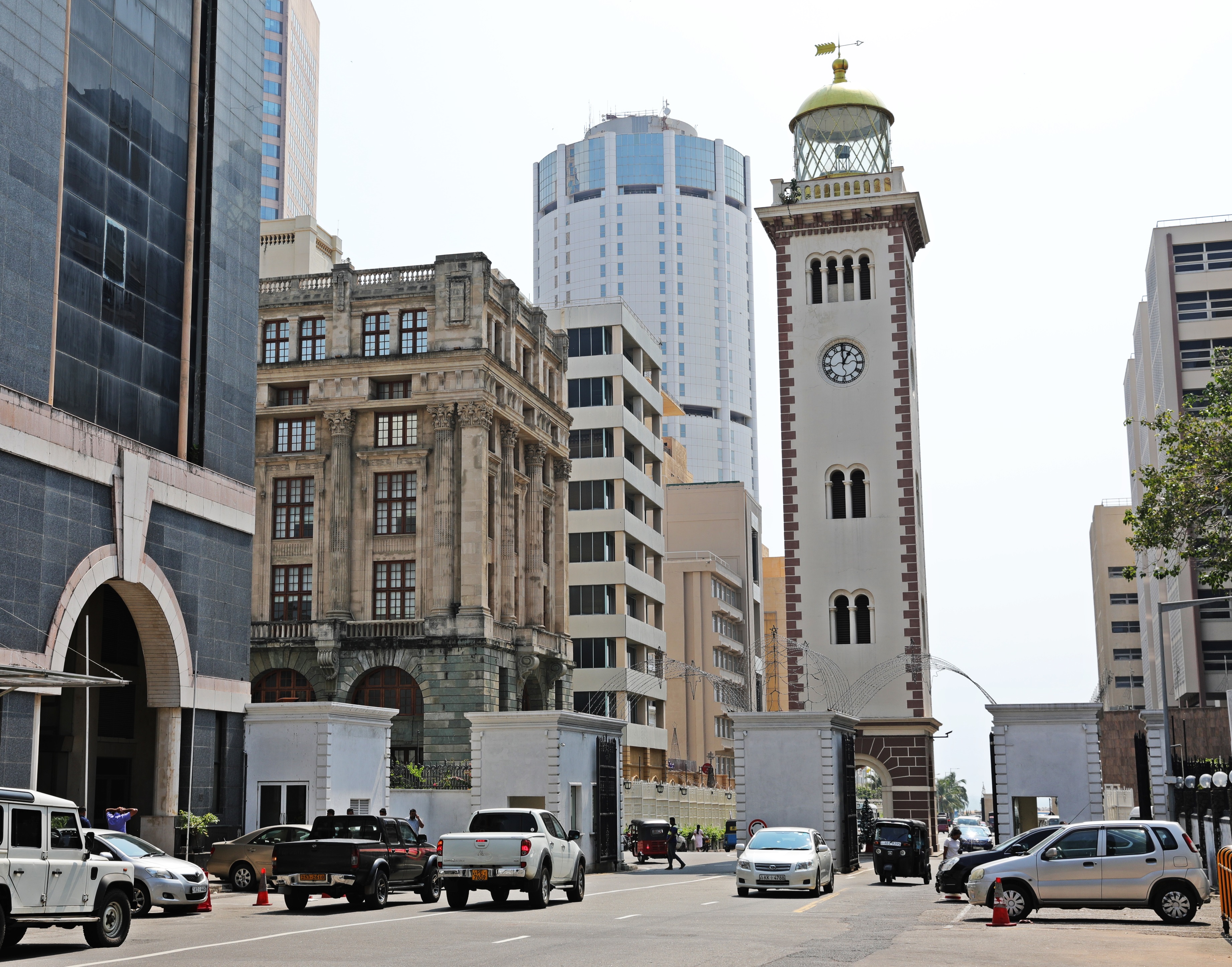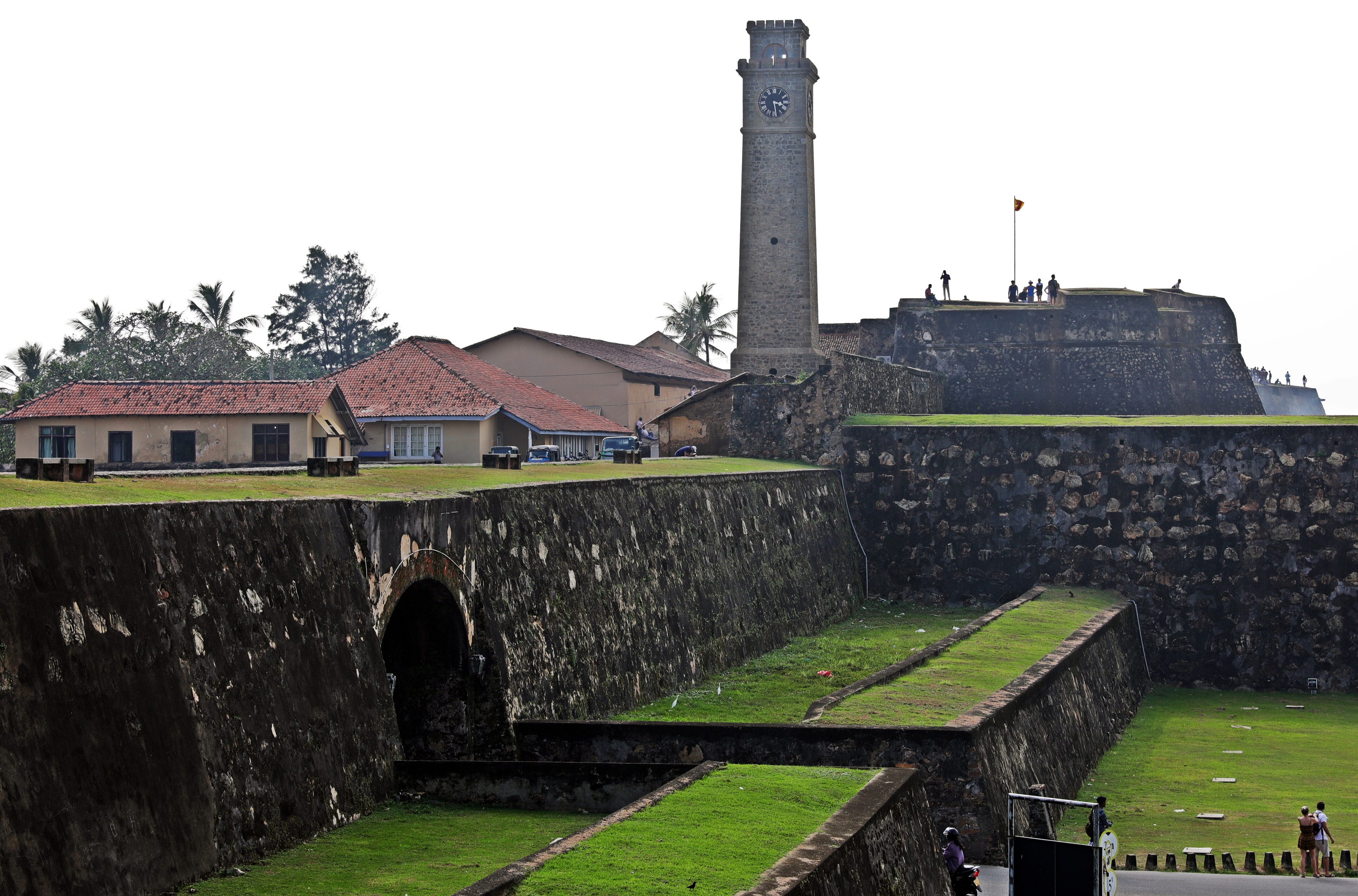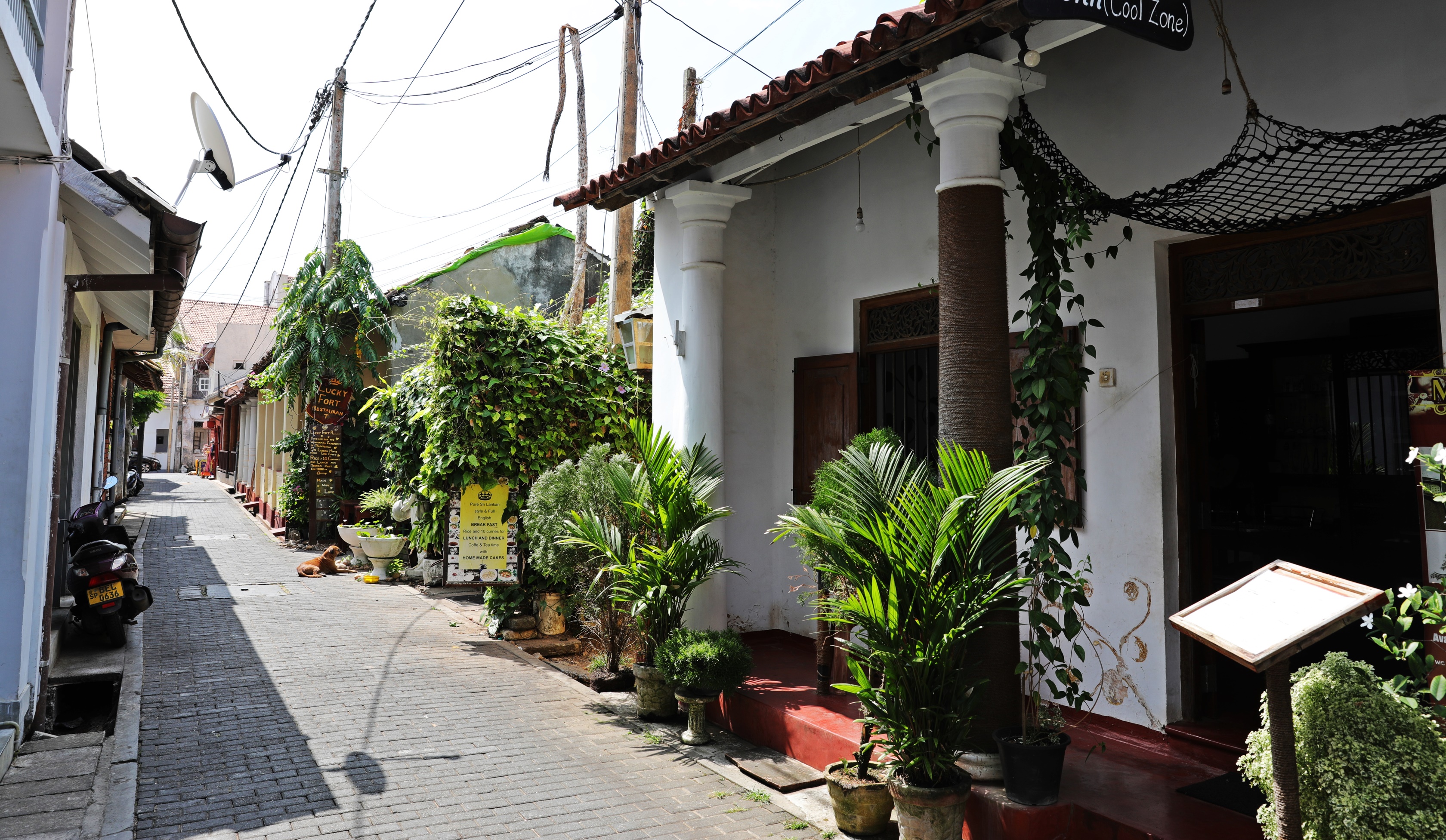What a wonderful surprise, Sri Lanka is like a breath of fresh air. From clean streets and sidewalks to safe pedestrian crossings; from new sky scrapers to well-maintained historical buildings. Sri Lanka seems to be one of the most advanced countries that we’ve visited in a while. Colombo, the country’s capital is more like Kuala Lumpur or Singapore than its neighbouring India. And the people are incredibly warm and friendly.
Colombo is a bustling city of over 5 million and yet the people are incredibly friendly, smiling and saying ‘hi’ as you pass them on the sidewalks or offering to help you when you look lost. Downtown Colombo used to be a fort. It was built by the Portuguese and then the Dutch took over and finally the British. Today there are no remnants of the fort, but there are many old colonial buildings in very good condition. We walked through the old fort area admiring the old buildings which are now offices and restaurants. The bustling downtown is not far away and the skyline is full of tall skyscrapers and cranes erecting even more. In the rest of the city there are many new buildings or renovated older ones that house offices, shops and restaurants. It seems very progressive and new.
The city is very clean. The streets, sidewalks and even river banks
are mostly free of litter. In fact we saw workers cleaning one of the small canals near our hotel. It is a very unusual site in Asia. Colombo is a great introduction to this marvelous land.

Old Parliament Building, Colombo 
Cargills Colonial Building, Colombo 
Colonial Building, Colombo 
Old Galle Buck Lighthouse and stupa, Colombo 
Clock Tower in the Old Fort, Colombo 
Colonial buildings in the Old Fort, Colombo 
Cleaning a canal in Colombo
The city of Galle was originally settled by the Portuguese in the 1500s who had apparently found it by accident. They were sailing for the Maldives when they were forced off course and landed in southern Sri Lanka. The area that is now Galle was not inhabited at the time as the Sinhalese Kingdom was located in Kandy in the centre of Sri Lanka. After a number of years of battle against this kingdom, the Portuguese found they needed to build a fort on the large peninsula. The Dutch took over in the 1600s and re-built much of the fort wall and buildings that are standing today. The 2004 Tsunami destroyed most of the towns in this region, but the well-built Dutch walls and well-planned drainage system are what saved Galle from the destruction.

Fort wall, Galle 
Galle Fort, Sri Lanka 
Fort wall, Galle
The fort is on a peninsula where 3 sides are bordered by the Indian Ocean. The fort wall is an imposing structure with thick stone walls that go straight down to a rough rocky shore. The fourth side spans the width of the peninsula on land. There is an Old Gate built in the 1600s and a main entry gate built by the British which is the main entry into the fort area today. It is possible to walk along the top of most of the wall where there are great views of the city and the ocean. On one side of the fort is an old clock tower and at the other a lighthouse. As impenetrable as it looks, we watched as a Monitor lizard climbed its way up the vertical wall.

Clock Tower above Main Gate, Galle 
Galle Fort, Sri Lanka 
View from fort walls, Galle 
Old Gate, Fort Galle 
Lighthouse, Galle 
Lighthouse Beach, Galle 
View from fort wall, Galle 
Climbing Monitor Lizard, Galle
Inside the fort walls Galle is the Colonial Town that you want all colonial towns to be. Beautifully restored Dutch buildings on quaint, clean streets and a functioning town for both locals and tourists. Mix in the palm trees and a rocky seashore and it’s the perfect setting. Many of the buildings now are jewelry shops or hotels and restaurants. It’s a great place to wander through the streets admiring the different architecture or stop and have a great coffee at one of the many trendy cafes.

Colonial building, Galle 
Colonial town inside fort walls, Galle 
Colonial Building, Galle 
Colonial buildings, Galle 
Colonial buildings, Galle 
Colonial buildings, Galle 
Colonial buildings, Galle 
Colonial buildings, Galle 
Colonial buildings, Galle
The fort is also part of a functioning city. Locals live in the fort, play cricket and walk around the fort walls. There is a Dutch church, an Anglican church, a Buddhist monastery and a Muslim mosque. On the side of the fort are the law courts and a police station. In true Sri Lankan friendliness, the police let you walk through their station to see a part of history, the Black Fort. Black because the Portuguese made gun powder here.

Rocky ground inside fort walls, Galle 
Colonial town inside fort walls, Galle 
Local cricket game, Galle 
Man in a lungi, Galle, Sri Lanka 
Galle Harbour, Sri Lanka 
Dutch Reformed Church, Galle 
All Saints Church, Galle 
Fort Shri Sudarmalaya Buddhist Temple, Galle 
Mosque, Galle 
Streets of Galle 
Black Fort, Fort Galle
The food in Sri Lanka is as unique as the land. They use coconut in both sweet and savory. It adds a nice, rich texture and flavour to omelets, bread and curries. The national dish is rice and curry, but it’s not as plain as it sounds. The curry is actually 5 or 6 small dishes that are different in everyone’s kitchen, but may include garlic eggplant, spicy coconut pate, potatoes in curry, spicy okra, lentil stew, and grilled chicken or fish. Grilled prawns, seer fish, tuna and barracuda are commonly on the menu.
After our first week enjoying our introduction to Sri Lanka, we’re excited to see what else this marvelous country has to offer.
Coming up next: Idyllic Beaches in Sri Lanka’s south
For extra pics from this trip go to Gallery/Sri Lanka. For extra pictures from other blogs go to Gallery at monkeystale.ca
To read about more of our adventures go to Destinations.
If you like what you read, please share it using the links below.
I was pleasantly surprised with Colombo as well. Like you said, friendly people and some nice places to visit. I think most tourists skip over it, but I think it is worth a few days visit if a person has time. Galle Face Green at sunset is such fun.
LikeLiked by 1 person
It’s good to read your glowing report about Colombo. It seems to be dismissed by many travellers. I’m excited about starting our trip with a few days there. Galle sure has a fascinating history and looks like a lovely spot. The fact that those old walls have withstood tsunamis is amazing…they don’t build things the way they used to!
LikeLiked by 1 person
Thanks Caroline, we were really impressed with Colombo. As an Asian capital, it’s very clean and modern but with a little history remaining. Hope you enjoy it too!
LikeLiked by 1 person